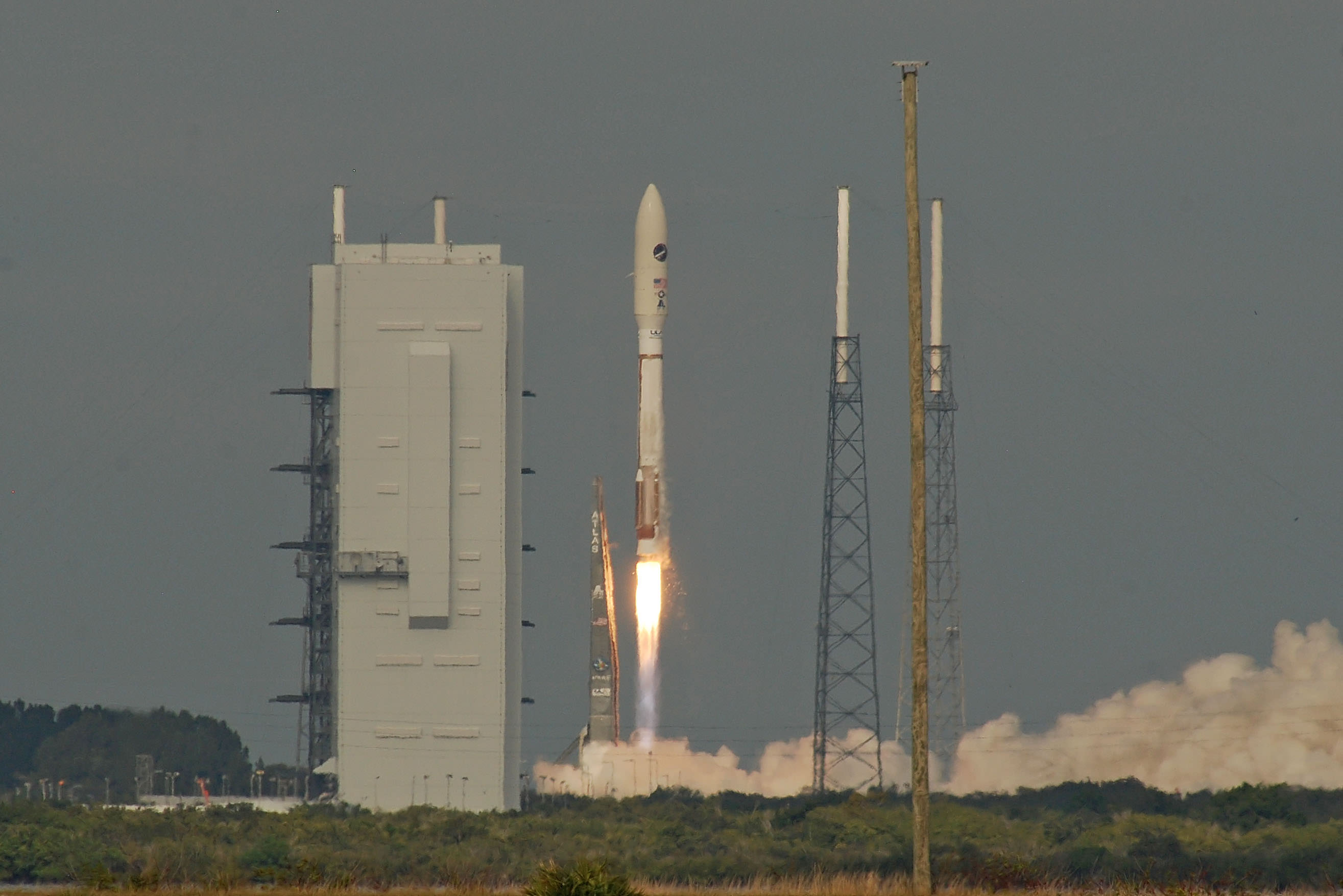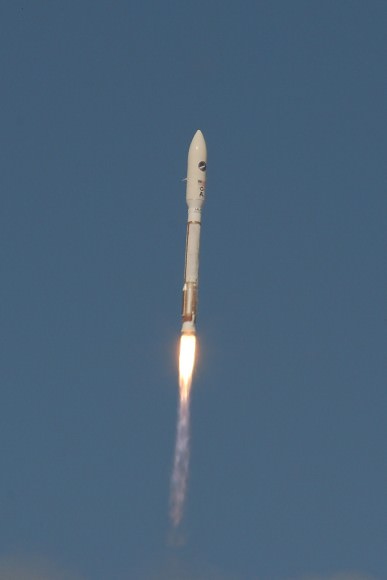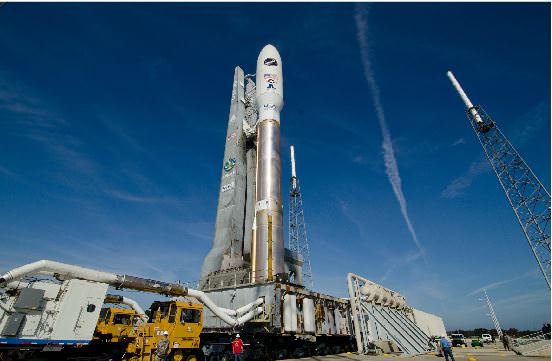Rising slowly on over 800,000 lbs of thrust, the Atlas V-OTV 3 mission begins. Credit: John O’Connor/nasatech
An Atlas V rocket launched from Cape Canaveral Air Force Station today, carrying the Air Force’s X-37B space plane into orbit on its third classified mission. Launch took place at 1:03 EST (18:03 UTC) for the unmanned Orbital Test Vehicle (OTV), which looks like a mini space shuttle.
The U.S. Air Force has not released any details of what may be on board the vehicle or what its mission may be. United Launch Alliance provided a webcast of the launch, but the broadcast was ended “at the request of our customer (the Air Force),” when the space plane successfully reached orbit.
See a video of the launch, below.
The X-37B is launched like a satellite and rides inside the fairing of the Atlas rocket. The X-37B can operate at in low Earth orbit for extended periods of time – the previous mission stayed in orbit for 469 days – and can re-enter Earth’s atmosphere and land on autopilot, landing just like a plane on a runway at Vandenberg Air Force Base in California.
Well into its roll program, the Atlas V-501 gracefully arcs across the blue skies. Credit: John O’Connor/nasatech
While looking much like the space shuttle, the X-37B is about 1/4 the size of NASA’s space shuttle’s and is built using composites lighter than aluminum, and it uses a new type of leading wing tiles, called Tough Rock, instead of the shuttle’s carbon-carbon tiles. It runs on solar power allowing for longer missions.
The plane itself is not so secretive – the Air Force has released images of it while it is on the ground – but its mission and payload are what are kept confidential. The mission could be Earth observation, surveillance or spying, or perhaps deploying a satellite.
A United Launch Alliance Atlas V is rolled to the pad at Space Launch Complex-41 in preparation for launch of the Air Force?s third Orbital Test Vehicle (OTV-3) mission. Credit: ULA
The launch was delayed several times so that ULA could investigate a glitch during a launch back in October.
“We had a little bit of concern with our upper stage engine, so we wanted to do some investigation and look into what was going on with that engine prior to (launch of the Orbital Test Vehicle),” said Jessica Rye, a ULA spokesperson.
In past missions, satellite watchers and amateur astronomers have kept tabs on the X-37B’s orbital whereabouts, and thanks to them, we expect to be able to provide small details about the space plane’s mission in the coming months.
More information: ULA




What the heck does the Air Force need this for? Attack anybody, at any place and any time?
Aside from the fact that that capability already exists via various aircraft, cruise missiles and ballistic missiles (which also have less predictable approach directions…X-37’s orbital parameters are not had to determine, and difficult to change), a small spaceplane would have no advantage over any other orbiting asset for that purpose.
The fact that it’s winged and cool looking, doesn’t make it a ‘space fighter…’
I think it might be a satellite repair vehicle, unless it is mounted with a high powered laser the probability of it being an attack platform is low. We have far more effective way of attacking other countries than a Orbital device.
Maybe defend us anytime from anybody, from anywhere.
I learned from an acquaintance the mission of the X-37B, and it’s pretty amazing. What it really is used for is
…. wasting tax payer dollars
Spy satellites, probably. What is Syria doing with their chemical weapons?
Leesee.. that last mission was 469 days. Now where could one go in that amount of time? Lagrange points or even Mars? Probably the mission is all about multiple LEO’s and has the ability to dip into the upper atmosphere after a high orbit climb? Super duper high speed low altitude passes anyone? Or maybe it’s all about going out an taking a look at what the Chinese are doing? Hmmm… prowlay both….
“Leesee.. that last mission was 469 days. Now where could one go in that amount of time? Lagrange points or even Mars?”
What has that to do with something that can’t leave LEO? There are systems that have operated in space for far longer than that, some of them *much* farther away than Mars. Simple endurance was demonstrated decades ago…
Are you certain this vehicle cannot leave LEO? With the Centaur still attached and a little left over fuel.. I’d wager it could!
No, the remaining propellant won’t be adequate for those kinds of velocity changes (26k feet per second just to reach LEO, another 10k feet per second to escape) without a much lighter payload than X-37…nor could the spaceplane survive re-entry speeds from those distances. If you want to do something like that, you want a ballistic capsule.
“In past missions, satellite watchers and amateur astronomers have kept tabs on the X-37B’s orbital whereabouts”, so we can at least be sure it hasn’t left Low Earth Orbit.
It occurred to me that this type of vehicle could well carry a manufacturing facility for novel materials. It’s the only activity that couldn’t be undertaken by other means, IMHO.
Mission revealed: To bring fresh oranges to the ISS for Xmas